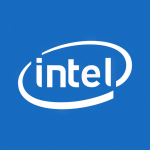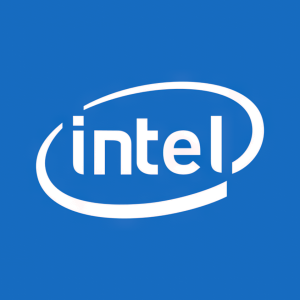Welcome to our dedicated page for Intel SEC filings (Ticker: INTC), a comprehensive resource for investors and traders seeking official regulatory documents including 10-K annual reports, 10-Q quarterly earnings, 8-K material events, and insider trading forms.
Intel’s wafer-fab disclosures, multi-billion-dollar cap-ex tables, and node-transition timelines can stretch past 300 pages. Hunting for cash-flow impacts or tracking when executives sell shares shouldn’t consume your day. Stock Titan’s AI separates signal from semiconductor jargon so you can locate Client Computing Group margins or spot 3 nm process updates in seconds.
Need the Intel annual report 10-K simplified? Our platform highlights where management discusses foundry strategy, supply-chain dependencies, and R&D commitments. When a fresh Intel quarterly earnings report 10-Q filing hits EDGAR, real-time alerts arrive—complete with side-by-side quarter-over-quarter charts and plain-English summaries.
Curious about leadership moves? Follow every Intel insider trading Form 4 transactions notice. Stock Titan delivers Intel Form 4 insider transactions real-time, flagging option exercises and open-market sales so you can gauge executive sentiment. Material announcements land fast, too—see each Intel 8-K material events explained in concise bullet points.
Our coverage spans all forms investors ask for:
- 10-K & 10-Q with AI context
- Form 4 for Intel executive stock transactions Form 4
- DEF 14A Intel proxy statement executive compensation details
- S-1, 424B, plus every amendment
Whether you’re modeling node-shrink costs or simply understanding Intel SEC documents with AI, Stock Titan provides the clarity, speed, and depth professionals demand. Explore Intel SEC filings explained simply and turn dense disclosures into actionable insight.
Intel Corporation (INTC) executive files insider ownership report. The company's EVP, CT & Ops Officer and GM Foundry reports owning 150,029 shares of Intel common stock directly. In addition, the executive holds derivative equity awards, including 179,652 performance stock units (PSUs) and several grants of restricted stock units (RSUs) tied to Intel common stock.
The PSUs can vest into up to 200% of one share of Intel common stock per unit, based on performance metrics set by the Talent and Compensation Committee over a three-year performance period, with scheduled conversion on January 31, 2028, subject to forfeiture conditions. The RSU awards generally vest over multi-year schedules, including annual vesting in three equal installments, eight substantially equal quarterly tranches beginning on January 30, 2025, and a staggered schedule of approximately 30% on the first and second anniversaries and approximately 40% on the third anniversary of the grant date.
Intel Corporation director reports equity ownership
A director of Intel Corporation (INTC) filed an initial ownership report covering an event dated 11/10/2025. The filing shows beneficial ownership of 26,021 shares of Intel common stock, held in direct form. This type of report is required when an individual becomes a director or otherwise reaches insider status and discloses their equity position in the company.
Intel Corporation appointed Dr. Craig H. Barratt to its Board of Directors, effective November 10, 2025. The Board determined he is “independent” under Nasdaq rules. Barratt brings decades of semiconductor and technology leadership, including CEO roles at Atheros and Barefoot Networks, senior roles at Qualcomm and Google, and current directorships at Intuitive Surgical and Astera Labs.
He will receive standard non‑employee director compensation, including a time‑based RSU grant of approximately $125,000 to be awarded in Q1 2026 and vesting on the earlier of May 7, 2026 or Intel’s 2026 Annual Stockholders’ Meeting, subject to continued service.
Intel Corporation filed a Form S-8 registering 150,000,000 shares of common stock, par value $0.001 per share, issuable to eligible participants under the Intel Corporation 2006 Equity Incentive Plan, as amended and restated effective May 6, 2025.
The filing uses General Instruction E to register additional securities and incorporates prior S-8 filings by reference. This new registration is in addition to earlier S-8s, including 150,000,000 shares registered on September 25, 2023, and multiple prior registrations dating back to 2006.
The registration supports equity awards granted under the plan, which can include stock options, RSUs, and other equity-based incentives as governed by the plan documents.
Intel Corporation reported stronger Q3 results. Net revenue was $13,653 million, up slightly year over year, with gross profit of $5,218 million. Operating income improved to $683 million from a prior-year operating loss. Net income attributable to Intel was $4,063 million, or $0.90 per diluted share, versus a loss of $3.88 per share a year ago.
Results reflected significant non‑operating items: a $5,546 million pretax gain on the sale of 51% of Altera and a $1,687 million mark‑to‑market loss on Escrowed Shares tied to a U.S. Government agreement. Cash rose to $11,141 million and short‑term investments to $19,794 million, while debt decreased to $44,057 million.
Intel entered major capital transactions. It issued 87 million shares to SoftBank at $23.00 per share for $2.0 billion and agreed to sell 215 million shares to NVIDIA at $23.28 per share for $5.0 billion, subject to customary closing conditions. Under its August 22, 2025 agreement with the U.S. Department of Commerce, Intel received $5.7 billion of accelerated CHIPs Act disbursements and issued 275 million shares, placed 159 million shares into escrow to be released as Secure Enclave disbursements are received, and issued warrants for up to 241 million shares at $20.00 per share.
Intel Corporation furnished an 8-K to announce its third-quarter 2025 financial results and provide forward-looking statements for the fourth quarter. The quarter ended on September 27, 2025. A press release titled “Intel Reports Third-Quarter 2025 Financial Results” is attached as Exhibit 99.1 and incorporated by reference.
The press release includes non-GAAP financial measures with reconciliations to GAAP and an explanation of how management uses these metrics. The information in Item 2.02 and Exhibit 99.1 is furnished and not filed under the Exchange Act.
Intel Corporation completed a private placement issuing 86,956,522 shares of common stock at $23.00 per share to SoftBank Group Corp., raising approximately $2.0 billion in cash. The shares have a par value of $0.001 each. The transaction was effected under a Securities Purchase Agreement dated August 28, 2025, and relied on the Section 4(a)(2) exemption from registration as a transaction not involving a public offering. The company previously disclosed the proposed transaction in a Current Report filed August 21, 2025.
Intel Corporation entered into a Securities Purchase Agreement with NVIDIA Corporation on September 15, 2025, under which NVIDIA agreed to purchase 214,776,632 shares of Intel common stock at $23.28 per share, representing an aggregate purchase price of $5.0 billion in a private placement relying on Section 4(a)(2) of the Securities Act of 1933. The purchase is conditioned on customary closing conditions, including expiration of waiting periods and any required approvals under the Hart-Scott-Rodino Antitrust Improvements Act. The agreement contains customary representations, warranties and covenants and does not grant NVIDIA any governance or information rights beyond those of Intel shareholders generally. Intel furnished a press release dated September 18, 2025, announcing the private placement and a collaboration between Intel and NVIDIA to develop AI infrastructure and personal computing products; that press release is provided as Exhibit 99.1 to the Current Report.


